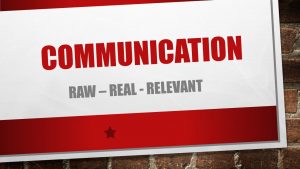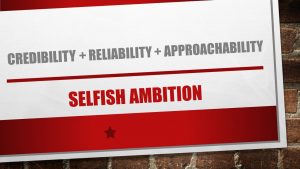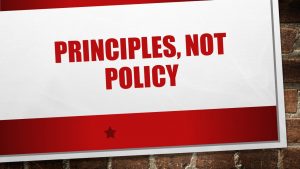It is a fight, an all-out, knock-down, drag-out brawl. U.S. workforce engagement levels of just more than 32% (Gallup, 2016), mean that roughly 7 out of 10 employees are disengaged while working for you. America’s disengaged workforce is costing us billions of dollars annually, with no end in sight. The impact on your productivity, quality, delivery, reputation, and morale cannot be ignored. The good news is that all employers are dealing with this issue. It is a level playing field! Turn this issue into a unique competitive advantage for your organization. After repeated employee surveys, year after year, and talking with hundreds of employees, common themes reveal why a workforce may feel like they have been the recipient of a stunning left-hook:
Distrust of leadership
Excessive turnover
Imbalanced contingent workforce
Excessive overtime
Favoritism (or the perception thereof)
No Work/Life balance
Communication gaps creating frustration
Lack of appreciation and recognition
No relationship with the leadership
Engaging your workforce is more than picnics, parties, and events. With more than 25 years’ experience in the trenches of industry, I am convinced there is nothing new under the sun.
Here are 9 powerful principles that drive workforce engagement.
Employment Is Not Just A Transaction
Take the time upfront to select and onboard the right people into the organization. You can’t develop what doesn’t exist, so hold out for the right candidate and do not compromise in filling the position. As the old saying goes, “One bad apple spoils the whole barrel”.
Involve front-line leaders in the process of selecting the people they will lead. Most of them have a keen sense for sniffing out “the bad apples”, and are less likely to whimsically dismiss someone new when they personally participated in their selection.
Add value to the selection process with the consistent application of an objective assessment tool. A lot of attention is given to candidates on a variety of factors such as skills, organizational fit, and background checks, but an often overlooked element may be the actual job fit. In other words, the peg may be the right height, length, and width, but not the right shape. A square peg does not fit into a round hole.
The churn of new employees is frustrating for both leaders and the workforce. Picking up the slack in the form of overtime and re-training because of poor employment decisions is detrimental to your workforce keeping their head in the game.
Provide a Safe Workplace
A single serious injury or a trend of less serious injuries, dominates the thinking of the workforce afterward with common questions – What is management doing about this? Do they care about me as a person?
The unfortunate experience of leading in the aftermath of a workplace fatality taught me an important lesson on this topic. As I witnessed the workforce come together, it became clear that workforce engagement and safety clearly feed off each other. Instead of checking out, the workforce was “all-in” to ensure needs were met, and that as a “family” we got through the tragedy together. Examples of why may have been that the leadership team was passionate about effectively communicating what had happened, and kept the workforce informed on the corrective action plan until complete. Attentive kindness and compassion were shown to those that attended the scene, former co-workers, and the victim’s family. We operated on principle, not policy. The policy did not provide for, nor support some of what was done. For example, if we would have blindly followed the policy, we would have given attendance occurrences, and charged vacation hours to co-workers who chose to attend the funeral.
Raw, Real, and Relevant Communication
Leaders must give feedback consistently that is raw, real, and relevant. Tell them what they said or did, and why you thought it was effective. If not, share with them an alternative and why the alternative would have been more effective.
Small round-table meetings in neutral locations are highly effective in reducing communication barriers and talking through relevant issues by the participants. Skipping levels of leadership in attendance introduces a broader perspective to both the leader and team member. Spend time learning and responding to issues as they arise to build credibility, reliability, and approachability. However, remember there are 3-sides to every issue, version 1, version 2 and the truth. Say “I don’t know” when necessary, but follow up with the appropriate parties afterward to score a massive hit. Attempting to appear as knowledgeable, or making it up as you go is a monumental miss you will pay for later.

Newsletters, emails, postings, and memos should not take the place of timely, authentic, and face to face communication. Again, make your communications raw, real, and relevant. It is more important now than ever, as the Millennial generation demands it. For example, a routine reminder of your anti-harassment policy could include “10 Reasons Why Sex at Work is Not a Good Idea”. Also, direct home mailing for organizing events and contests to inform spouses and other family members reinforces an overall sense of belonging.
Make Your Leadership Available
An open door policy is just that. Schedule time accordingly, if uninterrupted time is needed where your door must be closed, and post it on your door. Otherwise, keep your door physically open.
Free up your front-line leaders so that their day is not consumed by routine meetings that prevent time otherwise spent interacting with the workforce. It is amazing what changes when you “walk and talk”, conduct meetings in work areas, and at stand-up conference tables. Your front-line leaders are the meat in the proverbial sandwich between Sr. leadership and the front-line team member. Front-line leaders are challenged to keep both parties happy. Protect them. As the front-line leader goes, so does your workforce.
Insist on Trustworthy Leadership
Time for a gut-check. If a trustworthy leader is necessary for others to freely follow, apply this formula to your own relationships and gain insight into what may be holding you back:

Credibility + Reliability + Approachability / Selfish Ambition = Trust
Simply complete the equation by rating yourself on a scale of 1 – 10 for each of the factors.
Scale: 1 = Little; 10 = Much
Credibility = Subject matter expert in your field. You knowing what you are talking about.
Reliability = Consistent behavior and decisions. What you see is what you get.
Approachability = Ability to listen and relate to a diverse population.
Who will your workforce go to if they cannot trust you? Your trustworthiness as a leader matters.
All Leaders are Employee Advocates
Attending funerals for employees’ immediate relatives, coordinating relief efforts in the event one’s home is damaged by fire, promptly seeking help when suspecting a battered-spouse situation, and visiting an employee in the hospital are all examples of nurturing your workforce to promote engagement. These activities may be administered the HR function, but the leader must actively promote and be viewed as the champion.
Operate on Principle, not Policy
“Throw out” your policy manual and operate on principles of fairness and consistency. While policies may be necessary for regulatory compliance and to set basic expectations (e.g. – compensation, FMLA, attendance), prescriptive policies undermine a leaders’ ability to work with their teams to build a solid working relationship built on trust, accountability, equability, and fairness.

Requiring leaders to think and use good judgment, rather than hiding behind a policy, comes with the territory. 99.9% of the time when I’ve asked employees if they would rather be treated fair or equal, they have said Fair. Why? Most said because they were their own person, a unique individual, and wanted to be treated like one. Responding to an employees’ issue with “Because the policy says…” is a great way to start that long, downhill ride on the slippery slope to treated people like numbers. When in doubt, err on the side of the employee. The truly guilty party will eventually fire themselves.
Promote Personalized Appreciation & Recognition
Recognize your team members with sincere, specific, and timely words, gestures, and a variety of activities.
A formal program is not necessary and can blow up in your face. A scheme for prizes, awards, and cash may be fun, but if not carefully crafted can quickly become an entitlement, inequitable, or viewed as manipulative, spawning resentment and mistrust. Keep it simple. The bottom line is to have authentic, meaningful interaction. This includes employee compensation. No one expects to get rich “working for the man”, but competitive compensation and benefits demonstrate a commitment to this and other principles listed. Pinch pennies and your workforce will make you pay – they always get the last word.
Provide Opportunities for Advancement and Learning
Set goals for your non-entry level positions to be filled by those already in the organization. Remember, “the devil you know, maybe better than the devil you don’t know.” A good benchmark would be 80%. If that is not possible, it may be a good time to evaluate your employment and development processes.
While a small portion of the workforce may live by the “Do my 8 and hit the gate” principle, most want to do more and perform their jobs well. Invest in lifelong learning for your people through workshops, continuing education, and development experiences. If you worry about training people because they will leave to join a competitor, consider the cost of those not trained that stick around? You will lose the fight with one arm tied behind your back.
Summary
You don’t have to be perfect in any of these areas. Practice them all, and you will learn to excel in one or two of them naturally. Each is inter-related and are effectively delivered in a series for that ultimate knockout punch.



Leave A Comment